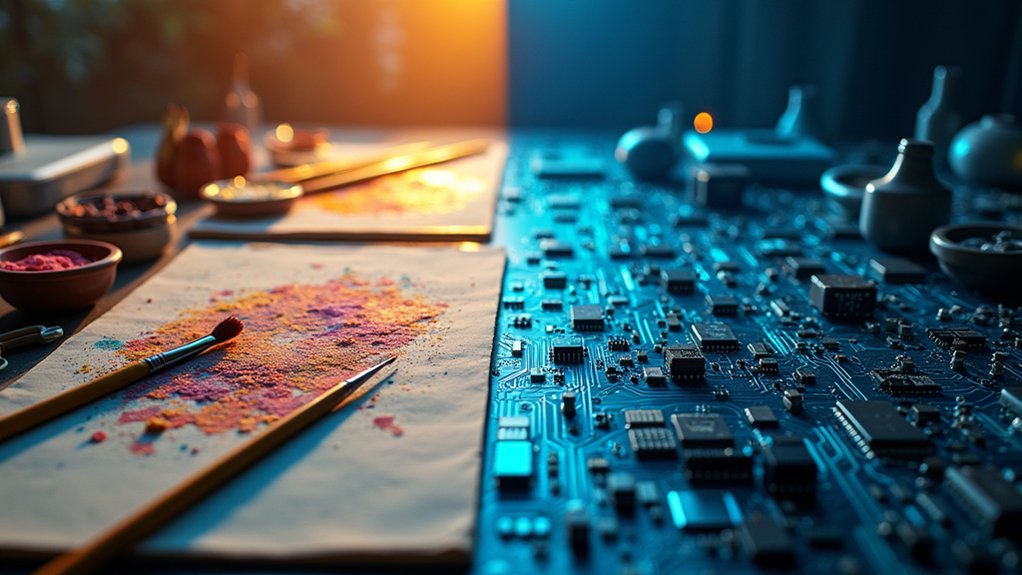While algorithms continue their relentless march into every corner of modern life, human capabilities remain stubbornly irreplaceable. Machines crunch numbers and recognize patterns with lightning speed, sure. But try getting an AI to truly understand why a child is crying or why a joke lands flat at a dinner party. Can’t do it. The emotional intelligence that humans possess—that ability to read a room, empathize with suffering, or navigate complex social dynamics—remains firmly beyond silicon’s reach.
Consider creativity. AI can generate impressive images and compose passable music by analyzing patterns from thousands of existing works. Clever trick. But it’s just sophisticated mimicry. Humans create art infused with lived experience, cultural context, and emotional depth. An algorithm doesn’t know heartbreak or wonder. It doesn’t question existence while staring at stars. The spark that drives human innovation comes from a place algorithms simply can’t access.
Adaptability is another human superpower. When the pandemic hit, teachers transformed kitchen tables into classrooms overnight. No reprogramming required. Humans thrive on change and limited information. Algorithms? They crash when facing scenarios outside their training data. They’re brittle. Humans bend.
Our critical thinking abilities let us navigate complexity with intuition and insight. Algorithms excel at finding patterns in structured data, but humans excel at making sense of chaos. We question assumptions, recognize causality, and make judgment calls in ambiguous situations. Important ethical decisions require weighing values that can’t be quantified in code. Rather than viewing AI and human intelligence as competitors, the future belongs to a complementary relationship where each enhances the other’s capabilities. The most effective business analysis comes from strong interpersonal skills that foster genuine collaboration between team members.
Finally, there’s our social nature. We’re wired for collaboration, building rapport, and communicating in ways both subtle and direct. Eye contact. A reassuring touch. The perfect pause before delivering an important point. Algorithms don’t get the nuance of human connection. They don’t build trust or resolve conflicts with emotional intelligence.




